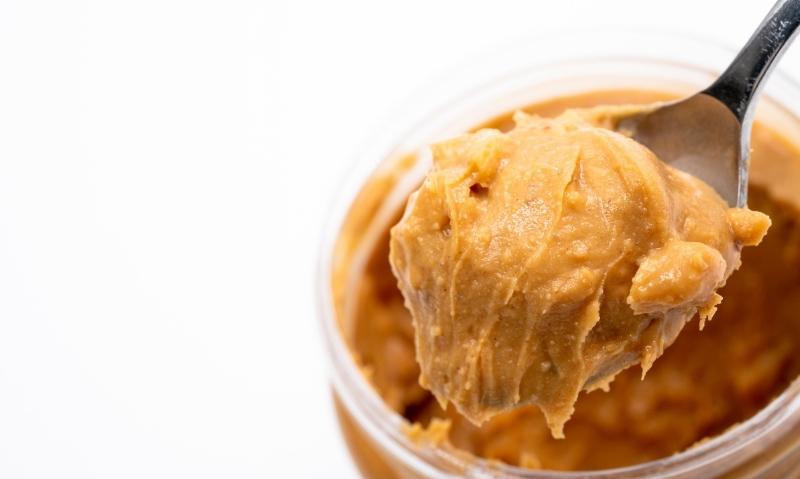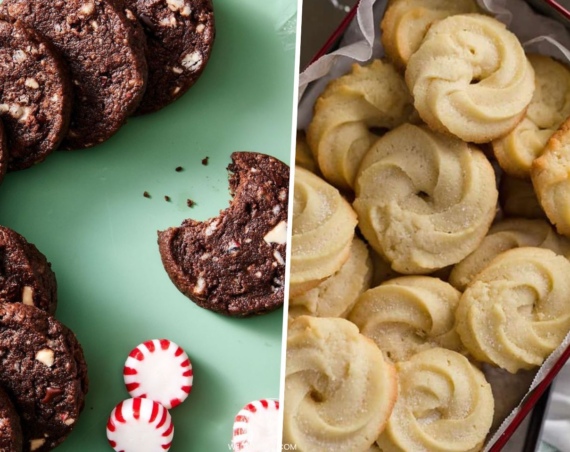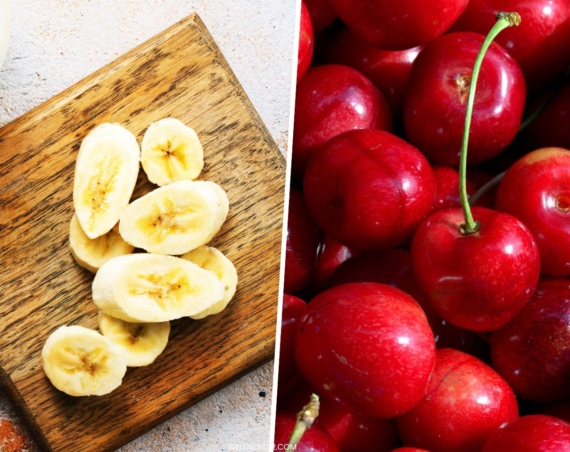
The typical profile of a keto-friendly food is: high-fat, low-carb, and moderate in protein. Peanut butter (with nothing added) fits this profile nearly perfectly. Besides fitting the keto profile, natural peanut butter is nutrient-dense and packed with healthy fats, protein, antioxidants, vitamins, and minerals. It’s also loaded with fiber — a nutrient that is sometimes inadequate on a keto diet.
Keeping your body nourished and satisfied is important if you are trying to lose weight. Because peanut butter is rich in protein and fat, it can help keep you full for longer and reduce hunger in-between meals.
Can You Eat Peanut Butter on Keto?
The answer is not as straightforward as you might think. Peanut butter can absolutely fit into a ketogenic meal plan, but there a few things to consider before labeling peanut butter as keto-friendly. First, always check the label of the peanut butter. You want to make sure that the ingredients are just peanuts and salt — no added oils or sugar.
Next, as with almost any food, including keto-friendly foods, the portion size can affect whether the food is keto-friendly or not. At 4 grams of net carbs per two tablespoons, peanut butter is keto-friendly. However, if you start eating peanut butter out of the jar, it may be difficult to stop at 2 tbsp.
The last thing to consider is what you plan to eat the peanut butter with. Maybe you like to eat peanut butter straight off the spoon. In that case, with two tablespoons, you would be consuming a net of 4 grams of carbs. However, if you plan to have the peanut butter combined with other foods or blended into a smoothie, you will need to calculate the total net carbs of all ingredients to see if the meal or snack fits into your carb budget.
Peanut Butter Nutrition Facts
Amount per serving 2 tbsp (32 g):
- Calories: 180
- Total fat: 15 grams
- Protein: 8 grams
- Total carbohydrates: 7 grams
- Fiber: 3 grams
- *Net carbs: 4 grams
*When counting carbohydrates on a keto diet you’ll want to look at net carbohydrates. You can calculate net carbs by subtracting the grams of fiber from total carbohydrates.
So, How Much Peanut Butter Can You Have on Keto?
This ultimately depends on your target carb intake per day. Over the years the keto diet has become loosely defined. A true ketogenic diet is extremely rigid and limits carbs to 5% of total daily calories, which translates to approximately 20 grams a day. The keto diet that most people follow now, also known as a modified keto diet, typically aims for less than 50 grams of net carbohydrates per day. Peanut butter nets just 4 grams of carbs per 2 tbsp., which can easily fit into a keto meal plan.
Keto-Friendly Peanut Butter
Not all peanut butter brands are created equal. You’ll want to stick with peanut butter that contains no more than 2 ingredients — peanuts and salt — and avoid products that contain added sugar or oil.
Your greatest tool when it comes to checking which peanut butter brands you can have on keto is the nutrition facts label. Using the label, you can check the ingredients list and calculate the net carbohydrates.
Are Other Nut Butters Keto?
Most nut butters can fit into a keto meal plan if: #1 the ingredients are limited to nuts and salt, and #2 you stick to an appropriate portion size…
Here are the net carb counts of several nut butters (per 2 tbsp):
- Pecan butter (1 gram) – After accounting for fiber, pecan butter comes in at the lowest net carb count at just 1 gram of net carbs per serving, making it an excellent keto snack
- Macadamia nut butter (2 grams) – At just 2 grams of net carbs, macadamia nut butter is a great high-fat, low-carb choice
- Almond butter (3 grams ) – It’s a good idea to switch up your nut butters since they all have a different nutrient profile, plus almond butter is slightly lower than peanut butter in net carbs
- Hazelnut butter (2-7 grams) – This is definitely one nut butter you’ll need to check the label to calculate net carbs. Some sources say hazelnut butter has 2 grams of net carbs, while others say 7 grams (1, 2)
- Cashew butter (8 grams) – Cashew butter is on the higher end of the spectrum for net carbs. On a low-carb diet, it’s best to stick with the lower-carb nut butters
Q&A
What snacks With Peanut Butter Can I Have on the Keto Diet?
- Add to low-carb smoothies
- Top on low-carb pancakes
- Mix into cottage cheese
- Mix with whipped cream cheese (2 tbsp. peanut butter + 1 tbsp. cream cheese)
- Spread on celery
- Add to low-carb brownies or low-carb pancakes
- Roll up in a low-carb tortilla
- Eat two tablespoons of peanut butter for a quick snack
- Roll peanut butter into a ball, sprinkle with cacao powder and refrigerate
- Combine with melted coconut oil or cream cheese to make fat bombs (freeze for 2 hours)
What Are Fat Bombs?
The internet has made it much easier to follow a low-carb lifestyle. Just search for “snack on keto fat bomb” or “snacks for keto fat bomb” and you’ll discover hundreds of mouth-watering recipes that are super easy to make. There are many different ways to make fat bombs. One popular idea involves these steps: melt coconut oil, whisk the coconut oil together with peanut butter and other ingredients (cacao powder, cinnamon, vanilla extract, stevia), spoon into cupcake liners, freeze for at least 2 hours, and that’s it.
Last Words
Peanut butter is a great high-fat, low-carb addition to a keto meal plan. It can easily fit into a well-planned modified keto diet, where the goal is to consume less than 50 grams of net carbs per day. Knowing what to look for on the nutrition label can help you determine if the peanut butter you use fits a keto profile. Look for products that contain 2 ingredients max — just peanuts and salt. Also, stick to the serving size.
Please note that certain groups of people are advised not to follow a ketogenic diet, including people with: type 1 diabetes, pancreatic disease, liver conditions, thyroid problems, eating disorders, gallbladder disease, pregnant or breastfeeding women, and athletes. A true ketogenic diet must be overseen by a medical professional or dietitian due to possible adverse events. Always check with your doctor or dietitian to make sure it is safe for you to start a ketogenic diet.
References
- (Source for 2 grams: https://fdc.nal.usda.gov/fdc-app.html#/food-details/1038719/nutrients)
- (Source for 7 grams: https://fdc.nal.usda.gov/fdc-app.html#/food-details/452591/nutrients)
- Food Data Central. U.S. Department of Agriculture. https://fdc.nal.usda.gov/index.html


